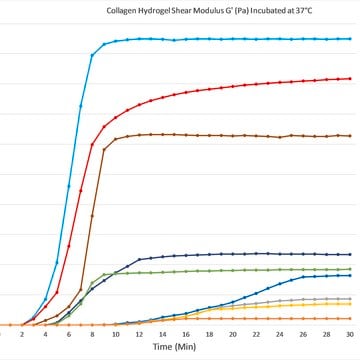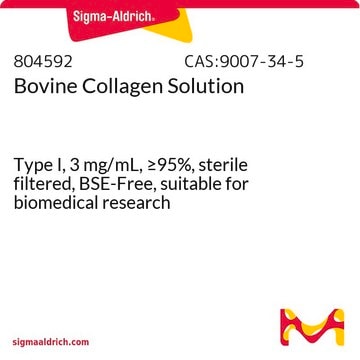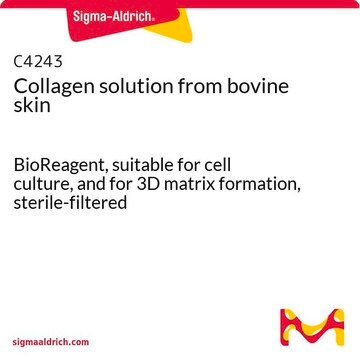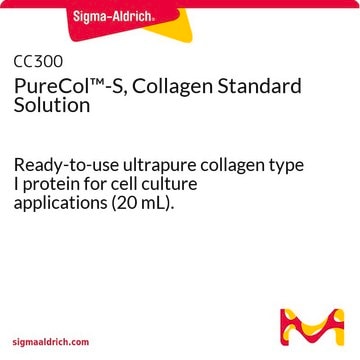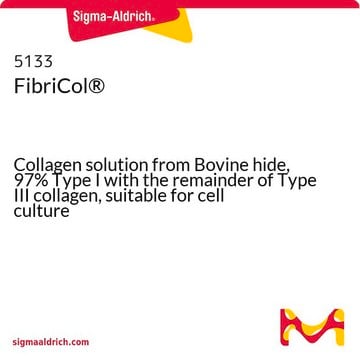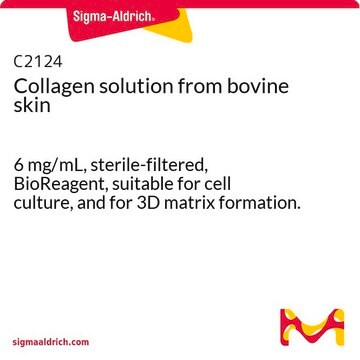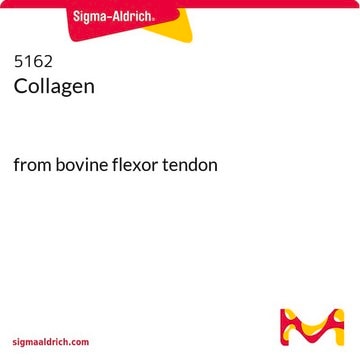5006
Bovine Collagen Type I & III
from bovine hide, powder, suitable for cell culture, PureCol™
Synonym(s):
Collagen Type I, PureCol Collagen
About This Item
Recommended Products
product name
PureCol™, Collagen powder from Bovine hide, 97% Type I with the remainder of Type III collagen, suitable for cell culture
Quality Level
sterility
sterile-filtered
Assay
99.9%
form
lyophilized
packaging
pkg of 15 mg
technique(s)
cell culture | mammalian: suitable
Binding Specificity
Peptide Source: Elastin
Peptide Source: Fibrinogen
shipped in
wet ice
storage temp.
−20°C
Related Categories
General description
It is ideal for coating of surfaces and providing preparations of thin layers for culturing cells. PureCol™, lyophilized form is not recommended for the formation of a solid gel. PureCol™ collagen is provided in user-friendly packaging for use and storage. This product is supplied as a sterile lyophilized powder.
Application
- in collagen gel preparation for the 3D sprouting assay with human umbilical vein endothelial cells (HUVEC) spheroids
- to coat Costar® Transwell® Inserts plates before cell migration assays with bladder smooth muscle cells (BMSC)
- to coat culture plates for collagen degradation assay with breast cancer cell lines
Preparation Note
Legal Information
Storage Class Code
11 - Combustible Solids
WGK
WGK 1
Flash Point(F)
Not applicable
Flash Point(C)
Not applicable
Certificates of Analysis (COA)
Search for Certificates of Analysis (COA) by entering the products Lot/Batch Number. Lot and Batch Numbers can be found on a product’s label following the words ‘Lot’ or ‘Batch’.
Already Own This Product?
Find documentation for the products that you have recently purchased in the Document Library.
Customers Also Viewed
Articles
Extracellular matrix proteins such as laminin, collagen, and fibronectin can be used as cell attachment substrates in cell culture.
Extracellular matrix proteins such as laminin, collagen, and fibronectin can be used as cell attachment substrates in cell culture.
Extracellular matrix proteins such as laminin, collagen, and fibronectin can be used as cell attachment substrates in cell culture.
Extracellular matrix proteins such as laminin, collagen, and fibronectin can be used as cell attachment substrates in cell culture.
Our team of scientists has experience in all areas of research including Life Science, Material Science, Chemical Synthesis, Chromatography, Analytical and many others.
Contact Technical Service